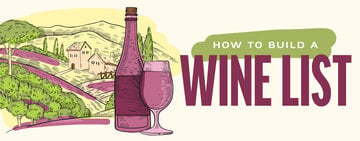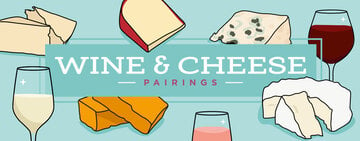How Many Glasses Are in a Bottle of Wine?
When you’re pouring wine for your guests or performing a formal wine service, you should be familiar with how many glasses of wine you get out of one bottle. This way, you’ll always provide the right-sized pour for each person and be able to offer suggestions on how many bottles are needed per table. You’ll also have a better understanding of how to stock your wine inventory. Keep reading to learn exactly how many servings of wine are in one bottle.
Shop All Wine GlassesGlasses of Wine per Bottle
How many glasses are in one bottle of wine? There are about 5 servings of wine in a bottle when using a standard pour size (5 fluid ounces). A bottle of wine contains 750 milliliters of wine, which equals about 25.3 fluid ounces. If you are pouring 5-ounce servings, the bottle will yield about 5 glasses (5 glasses x 5 ounces = 25 ounces). This is pretty simple math, but the confusing part comes in when the pour size is different than 5 ounces. We'll explain more about different wine pours below.
Types of Wine Pours
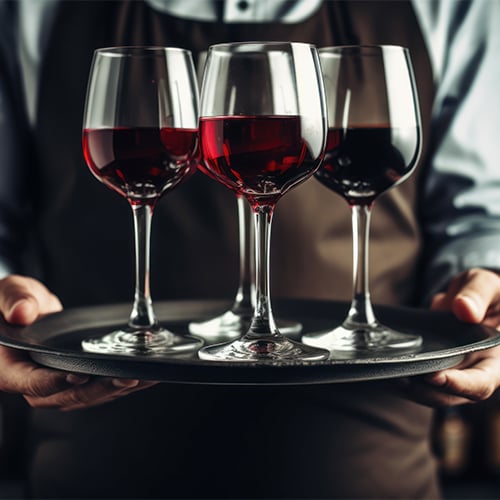
The size of the wine pour may vary depending on the type of wine or the style of service.
- Traditional Wine Pour - A standard pour size is 5 ounces, which yields about 5 glasses of wine per bottle. Some establishments may pour a little more at 6 ounces (4 glasses per bottle) or a little less at 4 ounces (6 glasses per bottle).
- Dessert Wine Pour - The standard pour size for a dessert wine is 2 ounces, which yields a little over 12 glasses of wine per bottle. These wines have a richer taste and a higher ABV, making the smaller pour size more appropriate.
- Fortified Wine Pour - For fortified wines like sherry and port, a standard pour size is 3 ounces. This yields about 8 glasses of wine per bottle. These wines are meant to be sipped and enjoyed as a before- or after-dinner drink.
- Sparkling Wine Pour - When pouring sparkling wines like champagne or prosecco, the standard pour size is 4 to 4.5 ounces. This yields between 5 and 6 glasses of wine per bottle.
- Wine Tasting Pour - During a wine tasting, the standard pour is between 2 and 3 ounces, which yields about 8 to 12 glasses of wine.
Wine Pour Sizes
Many wine bars will offer single glasses of wine at different pour sizes. Use this list of pour sizes as a guide to the number of glasses in a bottle of wine:
- 2-3 Ounces - 8 to 12 glasses of wine per bottle
- 4 Ounces - 6 glasses of wine per bottle
- 5 Ounces - 5 glasses of wine per bottle
- 6 Ounces - 4 glasses of wine per bottle
- 8 Ounces - 3 glasses of wine per bottle
How to Pour the Right Amount of Wine
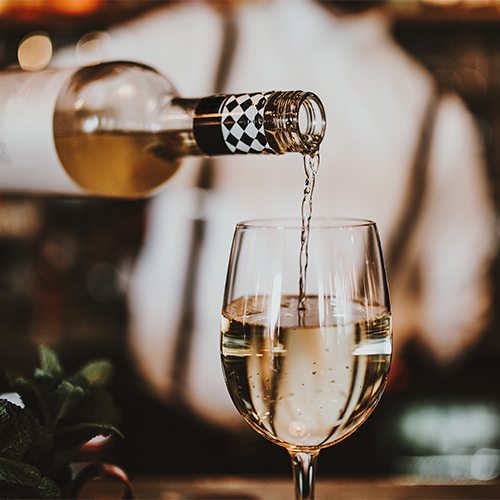
Knowing how much wine to pour into a glass is one thing, but being able to pour it correctly without measuring takes some practice. Unlike cocktail ingredients, which can be measured with a jigger, wine is usually poured free-hand. Overpouring will give you fewer glasses per bottle, which can result in an awkward situation if you are pouring for a table of guests. It's also not good for your bottom line to overpour your wine. Use these tips to train your bartenders and servers to pour wine correctly:
- Use the Glass as a Guide - Many types of wine glasses are designed with a shape that makes it easy to eyeball the pour correctly. A good rule of thumb is to pour the wine until it reaches the widest part of the bowl. Or, try stocking wine glasses that feature a pour line as a visual guide for your servers.
- Pour Spouts and Controlled Pourers - To ensure a consistent pour, consider using a pour spout or a controlled pourer. These handy tools fit securely onto the neck of the bottle and help regulate the flow of wine, making it easier to pour the right amount every time.
- Practice Counting - Fill an empty bottle of wine with water and practice making accurate pours using a counting method. This skill will allow you to pour the right amount of wine into any glass.
Types of Wine Bottles
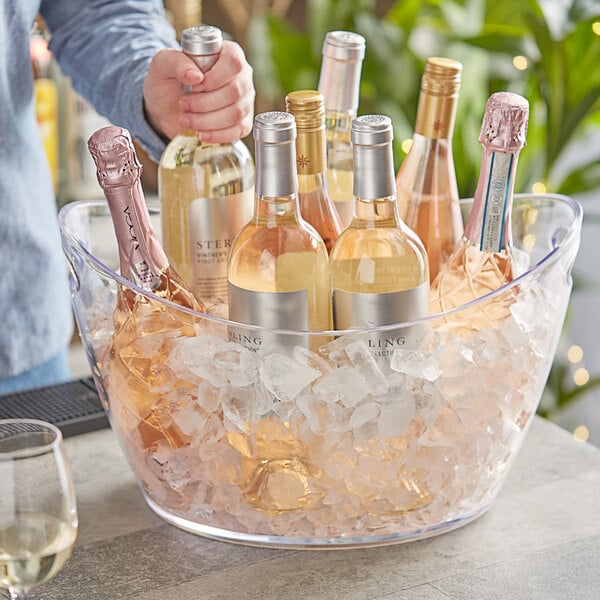
Are there different sizes of wine bottles? Yes, while the standard size of a wine bottle is 750 milliliters, there are several other sizes commonly used in the industry. Let's take a closer look at some of these sizes and why bars and restaurants need to know the difference.
- Standard Bottle (750 mL) - The most common wine bottle size you'll come across is the standard bottle, which holds approximately 750 milliliters of wine. This size is typically used for still wines, including reds, whites, and roses. With a standard bottle, you can expect to pour around 5 glasses of wine, assuming each glass is filled with the standard 5-ounce serving.
- Split (187.5 mL) - This is the smallest wine bottle and is equivalent to a quarter of a standard bottle. Split bottles are often used for single servings or for sampling different wines. They are perfect for customers who want to try a variety of wines without committing to a full bottle.
- Half Bottle (375 mL) - As the name suggests, half bottles contain half the amount of wine found in a standard bottle. These smaller bottles are great for customers who want to enjoy a glass or two without having to order a full bottle. They are also a popular choice for wine flights or tasting menus.
- Magnum (1.5 L) - If you're hosting a larger gathering or simply prefer to have more wine on hand, a magnum bottle might be the perfect choice. A magnum holds 1.5 liters of wine, which is equivalent to two standard bottles. With double the volume, a magnum can provide around 10 glasses of wine, making it a great option for group settings or events.
- Jeroboam (3 L) - For truly special occasions or celebrations, a Jeroboam bottle is a showstopper. This size holds 3 liters of wine, which is equivalent to four standard bottles. With a Jeroboam, you can pour approximately 20 glasses of wine, making it ideal for larger parties or gatherings where you want to make a grand impression.
- Methuselah (6 L) - If you're looking to make a statement and have an abundance of wine, a Methuselah bottle is the way to go. Holding a whopping 6 liters of wine, which is equivalent to eight standard bottles, the Methuselah is perfect for extravagant celebrations or events. With this size, you can pour around 40 glasses of wine, ensuring that no guest goes thirsty.
- Nebuchadnezzar (15 L) - Last but certainly not least, is the Nebuchadnezzar bottle, the grandest of them all. Holding a staggering 15 liters of wine, which is equivalent to 20 standard bottles, the Nebuchadnezzar is reserved for the most extravagant occasions. With this size, you can pour approximately 100 glasses of wine, making it perfect for large-scale events or wine enthusiasts who want to make a statement.
Wine Servings FAQ
If you're still looking for answers, check out these frequently asked questions about wine pours and servings.
Can You Get More Glasses of Wine from a Bottle If You Pour Smaller Servings?
Yes, if you pour smaller servings of wine, you can get more glasses from a bottle. For example, if you pour 4-ounce servings instead of 5-ounce servings, you should be able to get an extra glass from each bottle.
How Many Cups of Wine Are in a Bottle?
A cup is considered 8 fluid ounces, so a standard bottle (25.3 ounces) contains 3 cups of wine with a little bit left over.
How Many Milliliters Are in One Glass of Wine?
A 5-ounce serving of wine is equal to 147 milliliters.
When it comes to serving wine, it's not just about pouring the liquid into a glass and calling it a day. Whether you're a seasoned sommelier or a server at a restaurant, understanding how many glasses of wine are in a bottle is crucial knowledge. Not only does it show your expertise, but it also ensures that your customers are getting the right amount of wine for their enjoyment.

